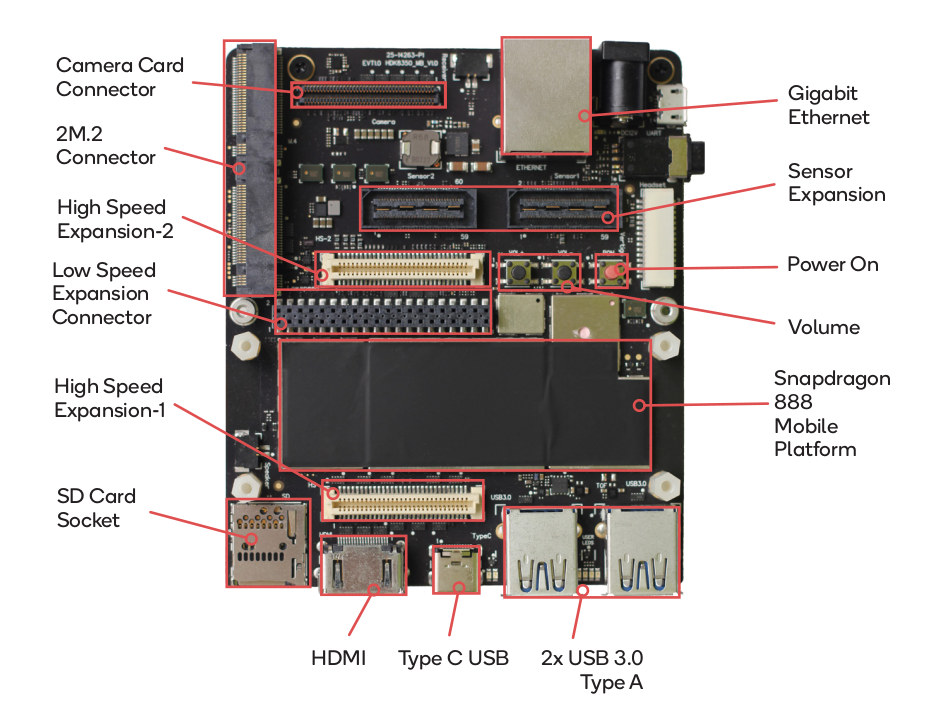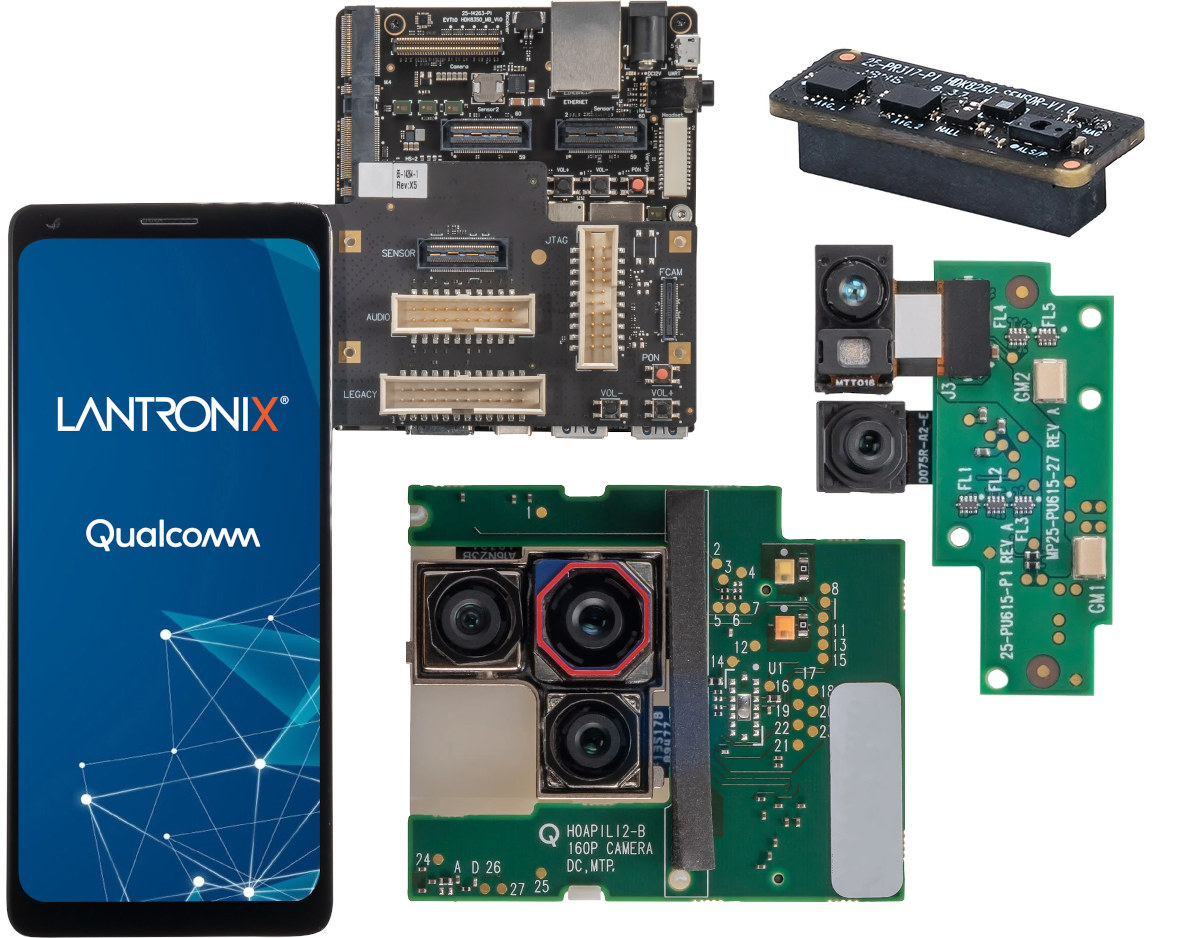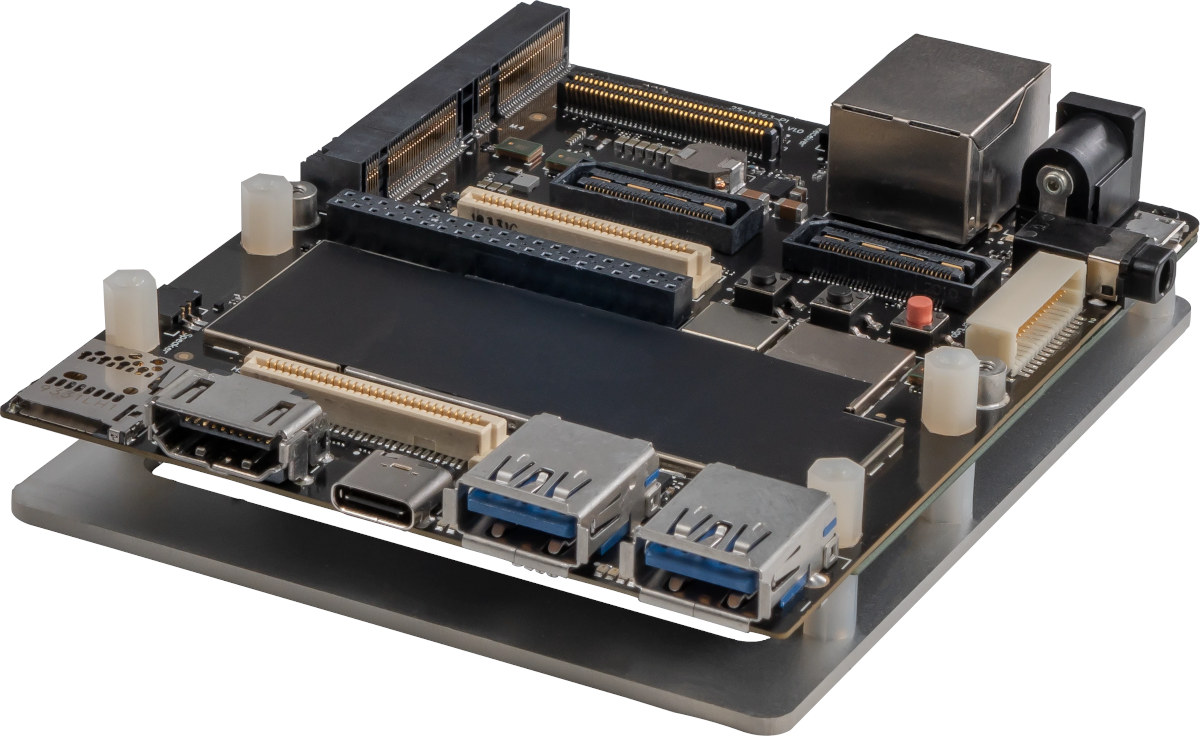Snapdragon 888 is the latest premium mobile SoC from Qualcomm with the octa-core processor combining one Cortex-X1 core, three Cortex-A78 cores, and four low-power Cortex-A55 cores, with Adreno 660 GPU and Snapdragon X60 5G modem.
The processor will likely most be found in smartphones, but Qualcomm partnered with Lantronix to launch the Snapdragon 888 Mobile Hardware Development Kit designed for Android app developers, hardware vendors, and original equipment manufacturers (OEMs).
Snapdragon 888 development board specifications:
- SoC – Qualcomm Snapdragon 888 (SM8350) octa-core Qualcomm Kryo 680 CPU with 1x Cortex-X1 core @ 2.84 GHz, 3x Cortex-A78 cores @ 2.42 GHz, and 4x Cortex-A55 cores @ 1.80 GHz, Adreno 660 GPU with support for OpenCL 2.0 FP, OpenGL ES 3.2, Vulkan 1.1, DX12, and up to 8K 360 VR video playback, Hexagon 780 DSP
- System Memory – 12GB LPDDR5 PoP memory
- Storage – 256GB UFS 3.0 flash, 1x MicroSD/UFS card
- Display
- HDMI 2.0 output up to 4K UHD
- DisplayPort 1.4 over USB3.1 Type-C
- 2x MIPI dual 4-lane DSI + touch panel interfaces
- Optional 6.65-inch AMOLED Display (2340 x 1080) with touch panel
- Audio – 3.5mm audio jack
- Camera
- 6x MIPI CSI with support for 3D camera configuration
- Optional rear camera daughter card with 16MP + 48MP + 13MP camera, VGA ToF sensor
- Optional front-facing camera accessory board with 20MP IMX476 front camera, MTT016 ToF camera
- Connectivity
- Gigabit Ethernet
- WiFi 6 – 802.11a/b/g/n/ac/ax @ 2.4/5GHz; Wi-Fi 6E-ready
- Bluetooth 5.1
- NFC
- USB – 1x USB 3.1 Type-C port, 2x USB 3.0 host ports, 1x micro USB 2.0 port for debugging
- Expansion
- 2x M.2 slots
- 96boards low-speed and high-speed I/O connectors
- 2x sensors expansion connectors
- Misc – Power and volume buttons
- Power Supply – 12V/5V via power barrel jack
- Dimensions – 100mm x 85mm (compatible with 96Boards CE Extended standard)

By default Snapdragon 888 Mobile Hardware development kit ships with the Snapdragon 888 SBC, a 12V AC power adapter, a USB cable, and a setup guide. But many applications will benefit from the optional display board, and/or front and rear camera boards, all of which are showcased in the unboxing video below.
Since this is a low volume product aimed at developers and product designers, price is fairly high just like previous Lantronix/Intrinsyc hardware development kits. The base development kit is sold for $1,349, the display board adds $499, the rear and front-facing camera boards a further $299 each, and a sensor board with pressure hall, magnetometer, and accelerometer/gyro and additional $150. So if you were to purchase a complete kit, the total cost would be around $2,600 plus shipping and whatever taxes may have to be paid.
Additional information may be found on the product page.


Jean-Luc started CNX Software in 2010 as a part-time endeavor, before quitting his job as a software engineering manager, and starting to write daily news, and reviews full time later in 2011.
Support CNX Software! Donate via cryptocurrencies, become a Patron on Patreon, or purchase goods on Amazon or Aliexpress





